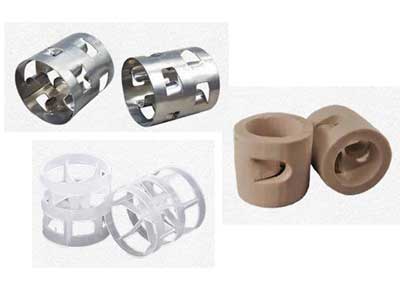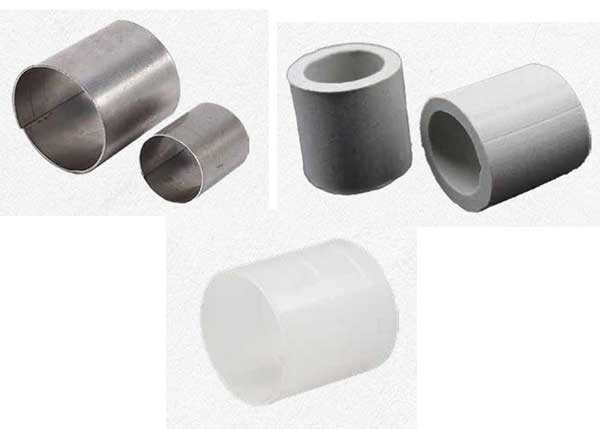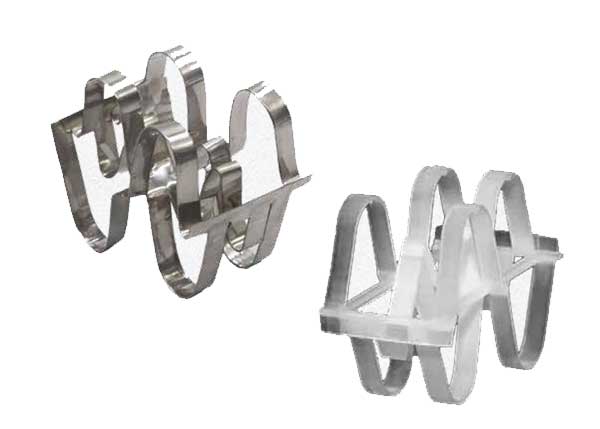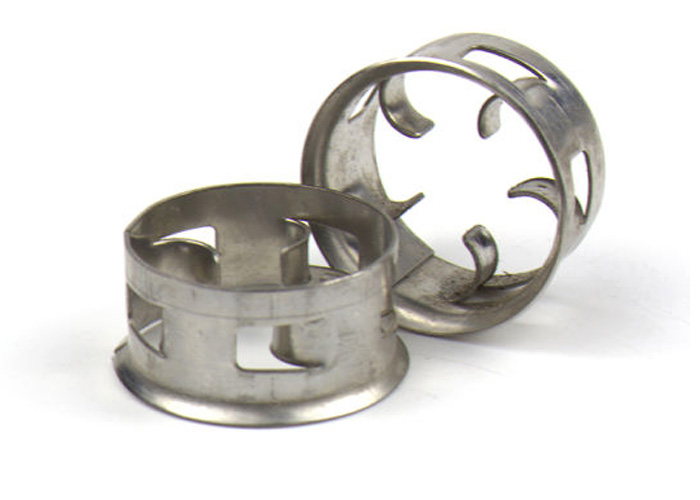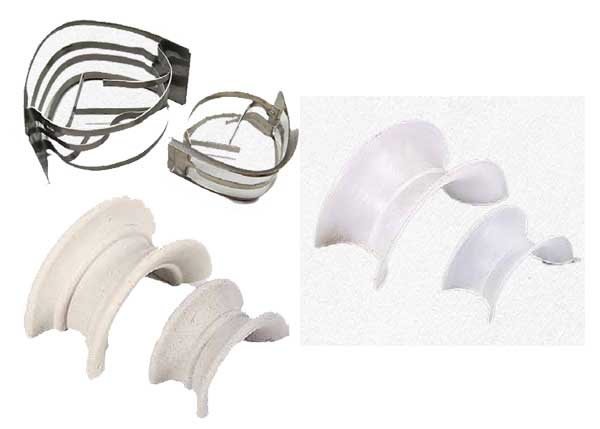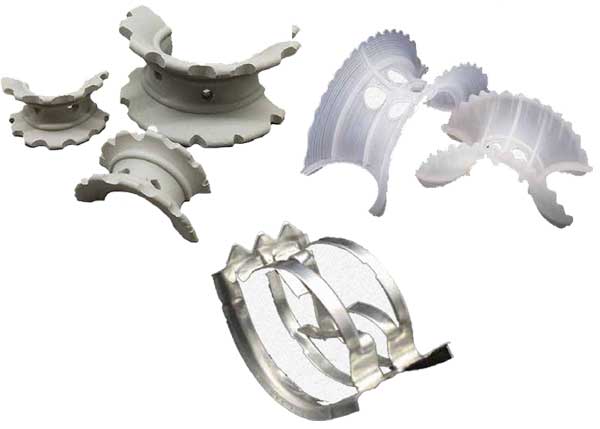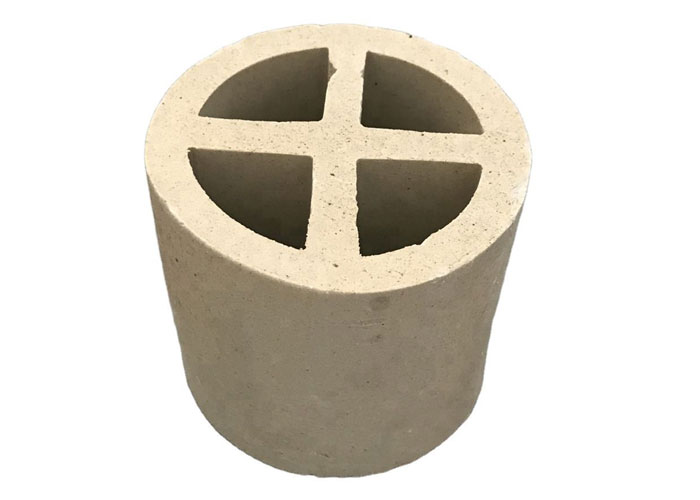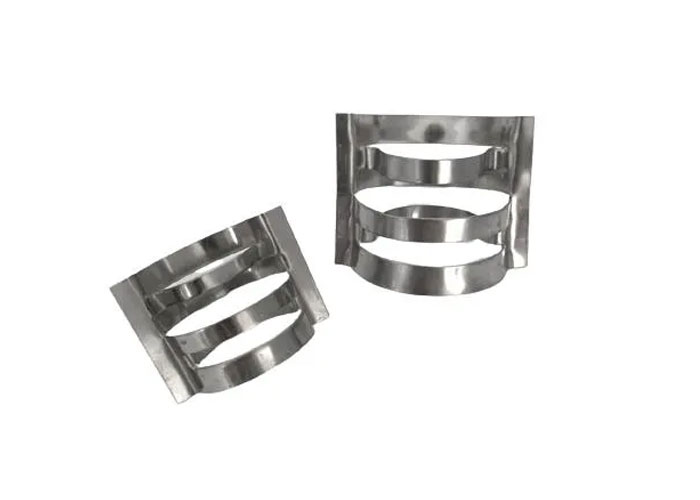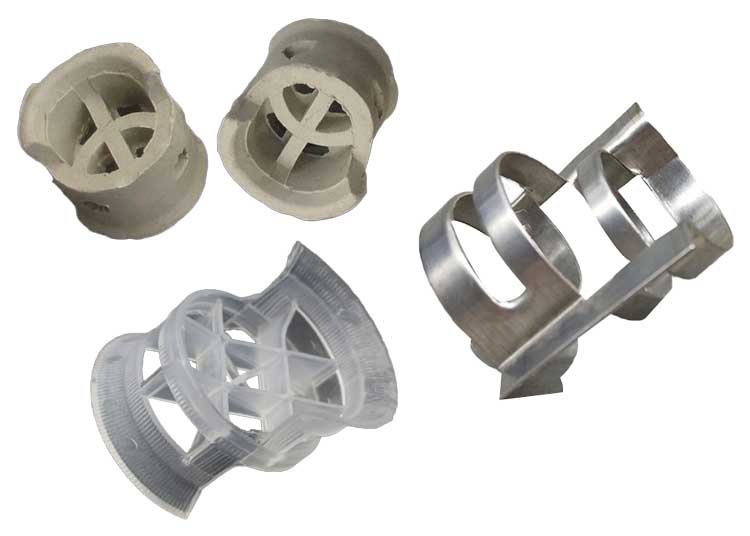Random Packing in Distillation Column
Random packing is a type of packing material used in separation processes within industrial columns, such as distillation and absorption columns. It consists of irregularly shaped pieces of packing material randomly stacked within the column, creating void spaces or channels for vapor and liquid flow. Common materials for random packing include ceramic, metal, plastic, or glass. Random packing promotes mass transfer between vapor and liquid phases by providing a large surface area for contact. It offers advantages such as high void fraction, uniform distribution of vapor and liquid flow, and cost-effectiveness. Random packing is widely used in industries such as petrochemicals, oil refining, pharmaceuticals, and chemical processing for applications such as distillation, absorption, stripping, and scrubbing. Overall, random packing plays a crucial role in enhancing separation efficiency, improving product quality, and optimizing the performance of industrial columns in various applications.
Ambani Metals is a trusted name in the industry, offering Random Packing in various sizes and materials of construction (MOC). Our wide range of Random Packing products includes standard options as well as customized solutions tailored to your drawings and specific requirements. As one of the leading Random Packing manufacturers, we provide top-quality products in metal, plastic, ceramic, and glass materials. These materials deliver high performance in diverse industries such as coal gas, petroleum, and chemicals, supporting processes like distillation, absorption, and purification.
At Ambani Metals, we pride ourselves on being among the best Random Packing manufacturers in India, delivering exceptional products that meet the highest industry standards. Trust us for all your Random Packing needs, whether standard or custom-designed, to optimize your operations and ensure efficiency.
Global Export of Random Packing
Ambani Metals is a trusted manufacturer and global exporter of high-quality random packing used in a wide range of mass transfer operations such as distillation, absorption, stripping, and scrubbing. Our precision-engineered random packing delivers excellent surface area, mechanical strength, and chemical resistance, making it the preferred choice for industries such as petrochemical, chemical processing, oil & gas, water treatment, and environmental control systems.
We supply a complete range of metal, plastic, and ceramic random packing solutions suitable for both new column designs and revamp projects. From high-capacity towers to cost-sensitive operations, Ambani Metals offers packing that maximizes performance while minimizing operating cost and downtime.
Ambani Metals supplies and exports random packing to industrial clients and EPC contractors in more than 40 countries, including:
- Middle East: Bahrain, Egypt, Israel, Jordan, Kuwait, Lebanon, Oman, Qatar, Saudi Arabia, and the United Arab Emirates
- Africa: Morocco, Tunisia, Ghana, Nigeria, Senegal, Kenya, Mauritius, Rwanda, Tanzania, Uganda, Zambia, Botswana, Eswatini, Lesotho, Namibia, and South Africa
- Europe: Germany, United Kingdom, France, Italy, Netherlands, Spain, Belgium, Poland, Czech Republic, Sweden, Denmark, Finland, Portugal, Hungary, Slovakia, Slovenia, Romania, and Austria
- Asia: Japan, South Korea, Singapore, Malaysia, Vietnam, Indonesia, Thailand, Philippines, Bangladesh, Sri Lanka, and Nepal
- Pan-Pacific Countries: United States, Canada, Mexico, Brazil, Chile, Colombia, Peru, Panama, Australia, and New Zealand
Whether you're upgrading a packed column, scaling up production, or designing a new unit, Ambani Metals is ready to deliver high-efficiency random packing tailored to your process. With global logistics support and technical design expertise, we ensure safe and timely delivery to your project site, anywhere in the world.
FAQs
Random packing refers to irregularly shaped packing materials used in separation processes within industrial columns, such as distillation and absorption columns. These materials are randomly stacked inside the column to create void spaces for vapor and liquid flow.
Common types of random packing include Raschig rings, Pall rings, Berl saddles, Intalox saddles, and various other shapes. These packing materials can be made from ceramic, metal, plastic, or glass, depending on the application.
Random packing creates void spaces or channels within the column, allowing vapor and liquid to flow through the packing material. This promotes mass transfer between the vapor and liquid phases, facilitating separation of components based on differences in volatility or solubility.
Random packing offers several advantages, including high void fraction, which provides a large surface area for mass transfer, uniform distribution of vapor and liquid flow, resistance to fouling, and cost-effectiveness compared to structured packing.
Random packing is used in various industries, including petrochemicals, oil refining, pharmaceuticals, and chemical processing. It is employed in distillation, absorption, stripping, and scrubbing processes to achieve separation and purification of chemical components.
The selection of random packing depends on factors such as the properties of the fluid mixture being processed, separation efficiency requirements, column specifications, operating conditions, and cost considerations. Common considerations include the material of construction, shape, size, and surface area of the packing.
Depending on the application and the condition of the packing material after use, random packing can sometimes be cleaned and reused. However, in many cases, it may be more cost-effective to replace the packing material with new material.

